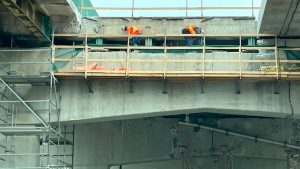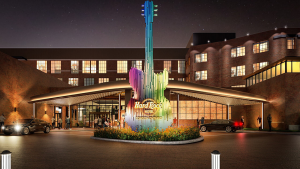Delegates attending the recent CityAge conference in Toronto were told that a reimagination of transit station design could be a critical element in spurring the next phase of city-building in the province.
The speaker was Nille Juul-Sorensen, an award-winning architect and director of architecture for Arup with experience in designs of new stations across Europe. Juul-Sorensen just moved to Toronto from London to work on Arup bids for upcoming transit projects. He described a eureka moment he and colleagues had as they contemplated usage statistics following the redevelopment of the high-profile Kings Cross transit station in London five years ago. The project included new shops and food destinations.
“That was the eye opener for us,” said Juul-Sorensen in an interview after he had participated in a panel discussion titled Building the Future’s Urban Infrastructure on the first day of the CityAge conference which took place Nov. 22 and 23.
“We can see that at any given time in that station, 30 per cent of people who are there are not there to take the train, they are there for other things,” he said. “The champagne bar, the restaurants, coffee shops.

Panellists Nille Juul-Sorensen (left), director for architecture for Arup, and Goldy Hyder, the president and CEO of Hill+Knowlton Strategies, discussed the future of urban infrastructure at the recent CityAge conference in Toronto.
“Now the big new stations we are working on are a lot more engaging in the community. How do they fit into the urban fabric, how do we get the right mix, and when we start mixing things we never thought could be a mix, people start getting interested.”
The evolution in thinking is ripe for exploration in Ontario, he said, as the province plans to spend billions on new transit infrastructure. Transit stations need not be drab places where people sit eight minutes before their ride takes them away, he said.
“From designing stations I am now designing cities,” said Juul-Sorensen, who described how citizens involved in his projects in Scandinavia are clamouring to offer ideas for future uses such as libraries, parks, a garden centre, even a flea market.
“It’s very important to use infrastructure to regenerate cities…figure out where to put the station, the growth will come with the station.”
The two other panellists, Goldy Hyder, the president and CEO of Hill+Knowlton Strategies, and Nancy MacDonald, Stantec’s urban planning lead for Canada, discussed ways public-private collaborations could be key tools as city-builders take the next step forward. Hyder, who is also the founding member of the Century Initiative’s board of directors, said cities need “real P3s” that can handle bigger and better projects.
Moderator James McKellar, an associate dean with York University’s Schulich School of Business, agreed, saying P3s are still in their infancy — they are mere “agreements.”
“The frontier is designing the business models that maximize the interface between the public and private sectors,” said McKellar.
MacDonald said public-private collaborations could lead to a rethinking of transit infrastructure with, for example, no need for expensive transit to be built to serve remote locations. Uber and Lyft, she suggested, could become the first-mile and last-mile providers.
“I don’t think a public and a private system on its own is the answer,” she said. “What we have to do is have that combination together and then pull the pieces that work best depending on which one is delivering which services.
“What happens is you bring the creativity from the private sector into the public side, which is less able to be nimble and adapt to what the needs are.”
Hyder said cities have to start thinking globally, and building infrastructure that creates a good quality of life that then enables the city to attract resources to take the next leap after that.
“It is a competitive environment out there for talent, and for money, and the infrastructure piece, the quality of life piece, is a vehicle by which to compete with other markets, to woo away talent that we definitely need here,” he said.
Hyder said a valuable role for government is to create the right policies and then use levers to build the kinds of communities we need. The province needs to address the rural-urban divide, he said — “We don’t all have to live in Toronto.”
Decision-makers require “an attitudinal change and I don’t often count on government to give us that,” said Hyder. “The public needs to be involved in that discussion.”
MacDonald said decades-old planning policies are “archaic” and inhibit cities from swiftly tackling new challenges. Hyder also commented that Prime Minister Justin Trudeau’s social housing policy, just announced that day, represented old-style thinking in that it threw money at the problem instead of using policy in a innovative way.











Recent Comments
comments for this post are closed